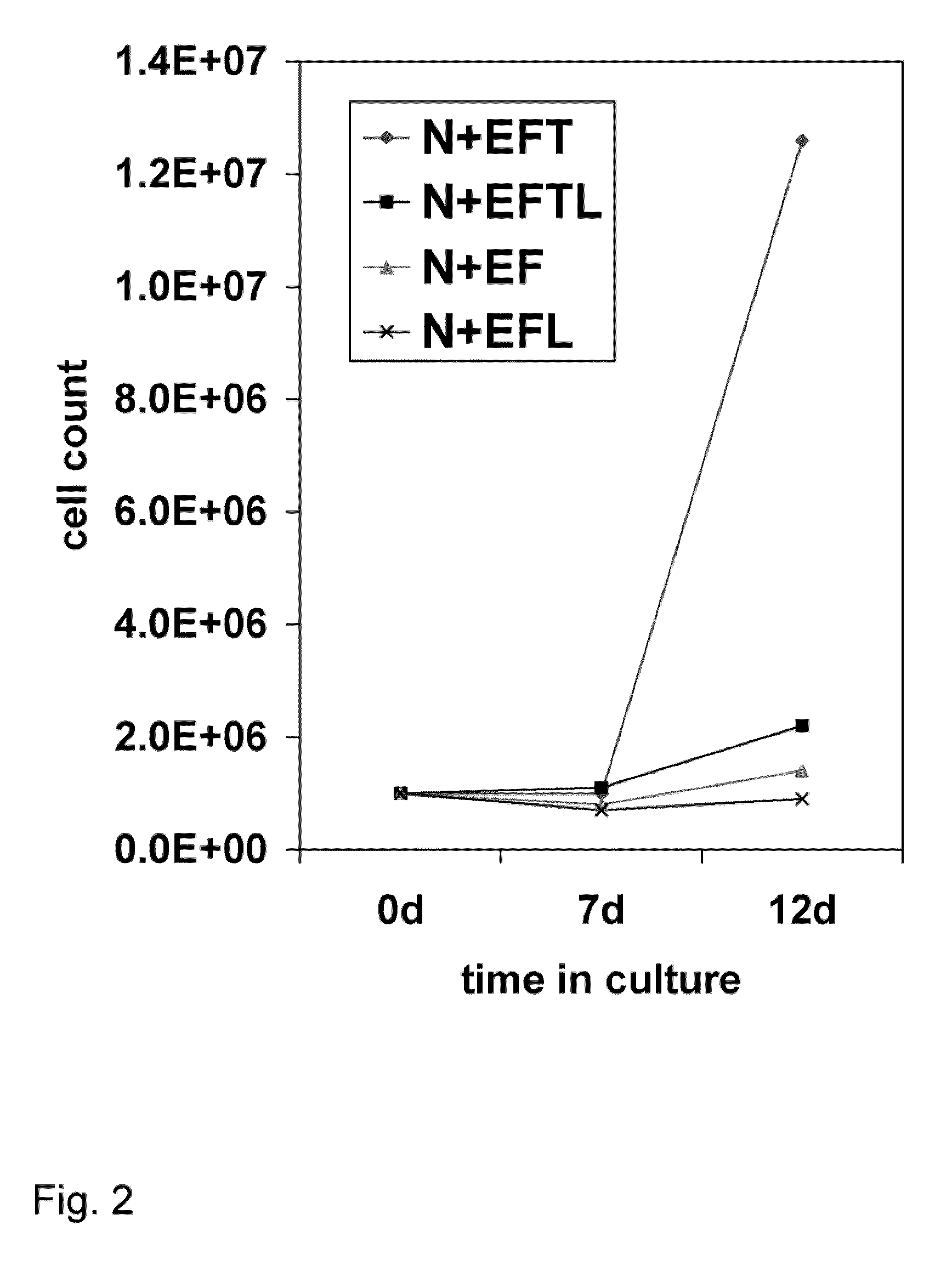Pluripotent cells
- Summary
- Abstract
- Description
- Claims
- Application Information
AI Technical Summary
Benefits of technology
Problems solved by technology
Method used
Image
Examples
example 1
Preparation of Progenitor Cells
[0083]This example demonstrates the preparation of brain progenitor cells (BPC), also referred to as neural progenitor cells (NPC). These same preparations, initially characterized as NPC (or BPC), were later determined to have features and express markers associated with pluripotent cells. The BPC were derived from the telencephalon (T lines) and mesencephalon (M lines) of fetal brain. Fetal tissue was obtained from physicians in the local area using the guidelines recommended by the National Institutes of Health. The donor was approached with the request for tissue donation only after an elective abortion was performed, and informed consent was subsequently obtained. No monetary compensation or other incentive were offered to the patient, gynecologist, or clinic. A sample of maternal blood was obtained and the following serologic tests were performed: HIV, hepatitis A, B, and C, HTLV-1, VDRL, and CMV. Fetal brain tissue was obtained through a low-pre...
example 2
Characterization of Source Tissue
[0085]This example describes the characterization of tissue dissected for the above preparation of BPC. Areas of the fetal brain tissue adjacent to the dissected tissue were treated similarly and fixed for immunocytochemistry and electron- and light microscopy. These adjacent sections were analyzed retrospectively for viability and functional specificity.
[0086]For morphological analysis, cortex and mesencephalon were taken from the fetus and processed for immunocytochemistry or ultrastructural morphology. Following dissection, part of the tissue was fixed in 4% buffered (pH 7.4) PFA fixative, then embedded in paraffin and sectioned on a rotary microtome. Samples of this tissue were processed in a histochemical procedure to visualize the various neuronal and glial markers (AchE, TH, NSE, MAP2, BrDU, Nestin, etc.).
[0087]Immunocytochemical labeling with peroxidase reaction was carried out with antibodies to the glial marker glial fibrillary acidic prote...
example 3
Optimization of Culture Media
[0090]This example describes the various media components tested for their influence on expansion and differentiation of BPC. Growth rates of the telencephalon- and mesencephalon-derived BPC were compared in three standard culture media: Dulbecco's Modification of Eagle's Medium (DMEM); Eagle's Minimum Essential Medium (EMEM) without calcium (Biowhittaker), Neurobasal (GibcoBRL), Ultraculture (Biowhittaker), and PFMR-4+8F (BRF) with at least 25 variable combinations of mitogens bFGF, EGF, TGFα, LIF; Caspase 3 and 8 inhibitors; and B-27 supplement. The efficacy of each combination was tested by cell viability and doubling time during short- and long-term expansion, as well as behavioral effects in the rat PD model after intra-striatal transplantation. The EMEM-based, low calcium culture medium with addition of bFGF, EGF, TGFα, LIF, and B-27 presented with the best results.
[0091]After the numerous ingredients were tested, perhaps the most surprising result...
PUM
| Property | Measurement | Unit |
|---|---|---|
| temperature | aaaaa | aaaaa |
| temperature | aaaaa | aaaaa |
| temperature | aaaaa | aaaaa |
Abstract
Description
Claims
Application Information
 Login to View More
Login to View More - R&D
- Intellectual Property
- Life Sciences
- Materials
- Tech Scout
- Unparalleled Data Quality
- Higher Quality Content
- 60% Fewer Hallucinations
Browse by: Latest US Patents, China's latest patents, Technical Efficacy Thesaurus, Application Domain, Technology Topic, Popular Technical Reports.
© 2025 PatSnap. All rights reserved.Legal|Privacy policy|Modern Slavery Act Transparency Statement|Sitemap|About US| Contact US: help@patsnap.com



